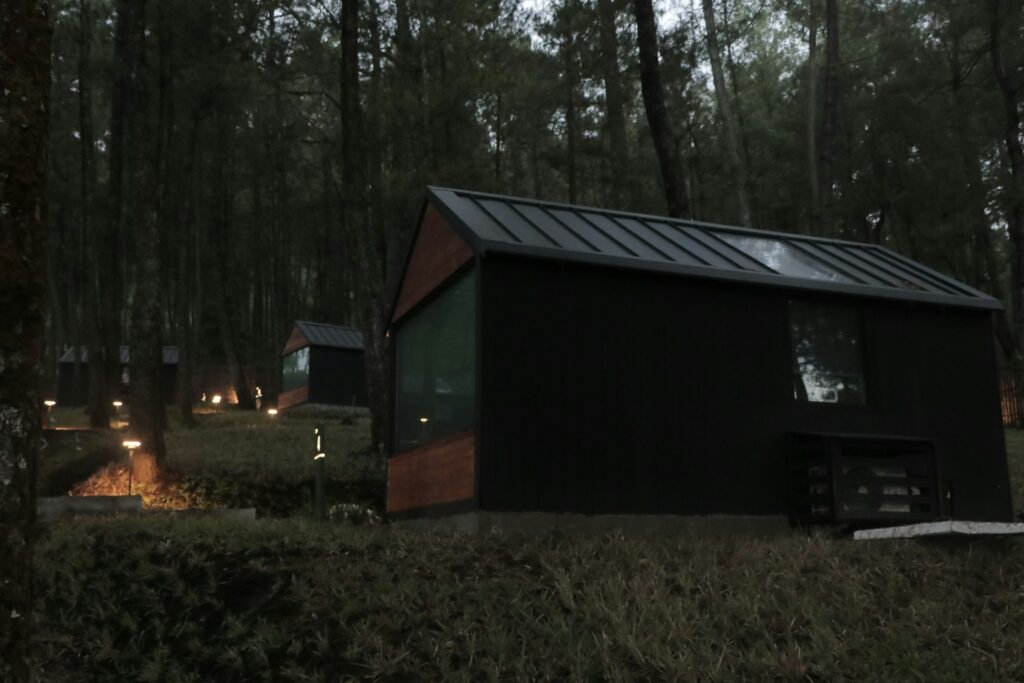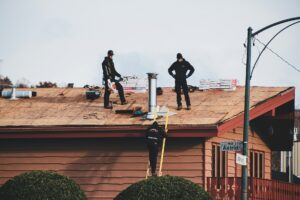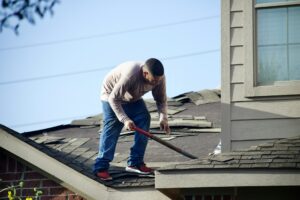September often marks a critical point in Medford’s wildfire season. With drier weather, strong winds, and increased fuel loads in nearby wildlands, the risk of fire escalates. Many homeowners feel the tension in the air, embers carried by the wind can land on rooftops, spark fires in gutters, or settle in eaves, ultimately threatening the entire structure.
A proactive stance is essential. Home hardening strategies, ranging from defensible space in the yard to installing fire-resistant roofing, can make a meaningful difference. By understanding the specifics of wildfire behavior and implementing targeted measures, you help safeguard your family, property, and community.
Check out HOMEMASTERS to explore fire-resistant roofing solutions and upgrades that can bolster your home’s defenses against Medford’s wildfire season.
Understanding Medford’s Wildfire Risk
In southwestern Oregon, Medford experiences a Mediterranean-like climate with hot, dry summers that promote prolonged fire seasons. The surrounding forested mountain ranges and grasslands can serve as tinderboxes once the dry season peaks. Frequent low humidity and gusty winds accelerate fire spread, pushing flames quickly from rural areas toward more populated regions.
Wildland-urban interface:
Medford’s proximity to wildlands places certain neighborhoods at higher risk. Homes tucked into wooded hillsides or near open fields often face greater exposure to flying embers, which can travel a mile or more in strong winds.
Local weather patterns:
Medford’s warm, dry climate can intensify wildfire behavior, typically reaching a peak in late summer through early fall. Persistent drought can further stress vegetation, increasing the likelihood of ignition.
Heightened alertness:
Staying informed through local news sources such as the Oregon Department of Forestry (ODF) or the National Fire Protection Association (NFPA) fire alerts can help residents prepare for sudden fire activity.
Understanding these dynamics encourages a shift in how homeowners view the threat. Rather than waiting for fires to appear on the horizon, proactive measures taken year-round can significantly reduce your home’s vulnerability.
Creating Defensible Space Around Your Home
One of the most effective ways to protect your property is to establish defensible space, which serves as a buffer between your home and nearby vegetation. Different zones around your home offer varying levels of protection, each playing a critical role in slowing or stopping flames before they reach your walls.
Zone One – Immediate perimeter (0–5 feet):
This is the area closest to your home. Keep it free of dry leaves and debris. Consider replacing wood mulch with non-combustible materials like gravel or stone. Limit or remove highly flammable plants such as juniper or cypress.
Zone Two – Mid-range buffer (5–30 feet):
In this zone, reduce continuous beds of dense vegetation. Space out trees and shrubs to prevent fire from racing across plant canopies. Regularly prune lower branches.
Zone Three – Extended perimeter (30–100 feet):
Keep grasses mowed to reduce potential surface fire. Thinning out heavier brush and removing deadwood from forested patches helps minimize ladder fuels, keeping lower-level fires from reaching treetops.
Choosing fire-resistant plant species for landscaping can be a game-changer. Succulents, hardwood trees with high moisture content, and well-maintained lawns can all help slow the progression of flames during critical moments.
Fire-Resistant Roofing Materials
Your roof is typically the first point of contact for airborne embers. Certain roofing options offer better resistance to fire than others. Class A fire-rated materials are specifically tested to withstand flames rapidly spreading across their surface.
Metal roofing:
Metal panels or shingles are highly fire-resistant. The smooth metal surface leaves few pockets for embers to settle, and it does not ignite under high temperatures, offering durable long-term protection.
Asphalt shingles:
Many asphalt shingles carry Class A ratings, especially when installed in multiple layers or combined with specific underlayments. These shingles can be budget-friendly but still offer strong fire resistance.
Concrete or clay tiles:
Concrete and clay tiles are robust, slowing down the spread of fire when embers land on them. Ensure no gaps exist underneath the tiles that could allow embers to reach wooden decking.
Consider the overall structure beneath your roofing material. Underlayment with fire-retardant qualities and properly sealed roof eaves can help block ember entry into the attic. The roofing system, when combined with strategic vents and flashing, forms a formidable barrier against direct flames and airborne sparks alike.
Gutter Maintenance for Fire Safety
Gutters are often overlooked during fire-preparation efforts. Yet a gutter clogged with dry leaves, pine needles, or other organic debris provides embers with an ideal ignition spot right at the edge of your roof.
Seasonal cleaning:
Regularly remove any accumulated debris, especially in late summer or early fall when wildfire risk is highest. A quick rinse with a garden hose can also help clear smaller particles.
Gutter guards:
Installing flame-resistant gutter covers prevents buildup by keeping new debris out. This structure also reduces the number of places where embers can land and smolder.
Downspout checks:
Debris can lodge in downspouts and restrict water flow. Confirm that water freely drains away, avoiding backups that might encourage material accumulation at roof level.
When gutters remain clog-free, any embers that land have less chance of igniting a flame along the eaves. Clean gutters also safeguard your overall home integrity, preventing overflow damage during sudden autumn rains or winter storms.
Attic Ventilation and Ember Intrusion
Attic spaces can become tinderboxes if embers find a way inside. Once inside a sealed, enclosed area, a spark can smolder unseen until it ignites insulation, wooden beams, or other flammable structures in the attic.
Vent screening:
Replace or retrofit attic and soffit vents with metal mesh screens, ideally with openings no larger than 1/8 inch. This effectively blocks embers while allowing necessary airflow.
Sealing gaps:
Check the areas around roof edges, eaves, and fascia boards. Seal any cracks or holes where wind-driven embers can slip inside.
Adequate ventilation:
Good airflow helps combat heat buildup in your attic. However, ensure you use fire-resistant materials and netting that prevent stray embers from riding the airflow.
A well-considered ventilation plan preserves the practicality of a vented attic while mitigating the risk of ember intrusion. Thoroughly inspect your home’s highest and lowest sections, fire can attack from both above and below.
Siding and Exterior Wall Protection
Rising flames often approach walls from the ground up. If your siding ignites, the heat can easily transfer to underlying structural components, significantly increasing the danger.
Fiber cement:
Many fiber cement sidings are rated for strong fire resistance. They combine cellulose fibers with cement and sand, minimizing flammability.
Stucco exteriors:
Stucco stands up well to heat. Its continuous surface leaves few gaps for flames to reach sub-layers.
Treated wood:
If you prefer a wood aesthetic, look for pre-treated boards labeled for fire resistance. Proper sealing and maintenance are crucial to maintaining protective qualities.
Inspection is key, especially around seams and joints. Cracks or gaps in siding could allow embers to slip behind panels, spread along the frame, and smolder until hot spots erupt into open flames.
Window and Skylight Considerations
Windows can be extremely vulnerable under fire conditions. Glass can crack from heat, allowing flames or embers deeper access into your home. Protecting these potential weak points is a logical next step in a comprehensive fire-hardening plan:
Dual-pane or tempered glass:
Dual-pane windows offer improved insulation and flame resistance. Tempered glass is up to four times stronger than standard glass, reducing the risk of breakage in high-heat conditions.
Shutters or screens:
Metal shutters and steel mesh screens provide an additional barrier against debris. If shutters aren’t feasible, opt for metal window screens over flammable plastic mesh.
Skylight updates:
Equipping skylights with tempered glass instead of plastic materials can improve their resilience under extreme heat.
Fire enters where it finds the least resistance. Fortifying windows and skylights ensures you don’t give embers a quick path inside.
Deck and Fence Fire Safety
Flammable features like wooden decks and perimeter fences can act as conduits for fire, pulling flames right up to the home’s exterior walls.
Composite or concrete decking:
Materials containing a high percentage of non-combustibles resist ignition much better than untreated wood. If you do choose wood, treat it with fire-retardant coatings and maintain it diligently.
Clear spaces under decks:
Keep the underside of your deck clear of leaves, pet hair, or stored items. Embers can accumulate beneath the boards, igniting hidden flames that rush upward.
Fire breaks in fencing:
Wooden fences attached directly to the home can act like a fuse. Installing a small section of metal or masonry fence near the house entrance creates a break that can stop fire from traveling along the fence line.
Making these adjustments not only helps protect individual features but also integrates them into your broader fire-prevention strategy.
Insurance Considerations for Wildfire Zones
Insurance providers closely evaluate homes in wildfire-prone regions. Taking home-hardening measures can help you retain or find affordable coverage while ensuring peace of mind.
Policy review:
Speak with your insurance agent about the fire rating of your roof, siding, and windows. Demonstrating higher levels of fire resistance often leads to a more favorable premium.
Documentation:
Photograph your defensible space, installed fire-resistant materials, and completed maintenance tasks. These records can prove what protective upgrades you’ve made and streamline any future claims.
Community impacts:
Insurers also assess firefighting resources in your area. Medford generally keeps robust emergency services, but strengthening your personal preparedness benefits everyone.
By showing proactive steps, you can potentially reduce overall insurance costs and improve your prospects for full coverage in high-risk zones.
Emergency Preparation Checklist
When fire warnings arise in Medford, swift action is critical. Preparing a checklist ahead of time increases the likelihood you’ll remember key tasks under pressure:
Review roof safety:
Ensure shingles and metal panels remain secure and free from gaps. Quickly clear any debris from gutters or downspouts.
Close windows and seal doors:
Eliminate drafts and prevent loose embers from entering. Double-check vulnerable entry points, such as attic vents or crawl space doors.
Move flammable objects:
Store outdoor furniture, propane tanks, or yard tools away from the home’s immediate perimeter.
Ready your “go bag”:
Include important documents, medications, water, and clothing. Back up essential computer files off-site or in cloud storage.
Communication plan:
Arrange a meeting spot in a safe area outside the fire zone. Share phone numbers with neighbors or coordinate social media check-ins.
Moments before an evacuation, these small steps can thwart major damage to your home. Maintaining composure under stress begins by rehearsing strategies well in advance.
Conclusion
Protecting your Medford home from wildfire threats is a year-round endeavor. While September conditions can be especially risky, ongoing upkeep of defensible space, routine gutter cleaning, and detailed inspections of roofing, siding, and ventilation can dramatically reduce the odds of a catastrophic event. These measures work together harmoniously, ensuring that if hot embers land on your property, they meet minimal fuel and quickly fizzle out.
Smart preparation now prevents heartbreak later. Each upgrade to your home’s exterior compounds, building layers of protection that can make all the difference during a critical wildfire event.
Ready to upgrade your home’s exterior? HOMEMASTERS Home Renovation specializes in fire-resistant roofing, comprehensive home hardening, and other preventative services that fortify your peace of mind. Act now to bolster your home’s resilience against Medford’s wildfire season.




